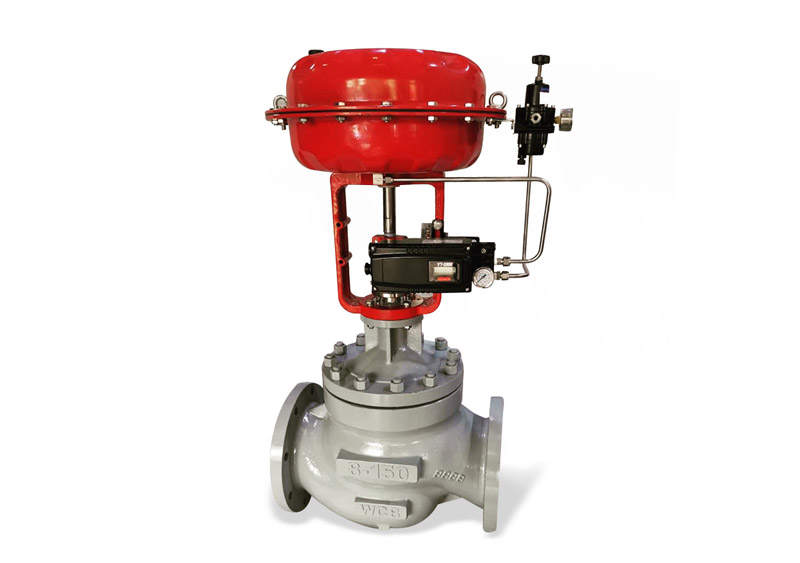Effective Control Valves: Trick Components for Effective System Monitoring
Effective Control Valves: Trick Components for Effective System Monitoring
Blog Article

Maximize Energy Savings and Comfort With Advanced Structure Automation Controls
In the world of modern-day architecture and center monitoring, the combination of innovative building automation regulates stands as a critical advancement. The merging of technology and sustainability has birthed a brand-new age where energy effectiveness, comfort optimization, and operational streamlining are no much longer attainable truths but far-off aspirations. By using the power of automation, structures can adjust, respond, and progress in ways that were as soon as unbelievable. The capacity for substantial power financial savings and boosted comfort is not just an assurance however an opportunity waiting to be satisfied. This paradigm shift in structure management holds the key to opening a globe where environmental conscientiousness and passenger health sympathetically exist together within the wall surfaces of our structures.
Energy Efficiency Advantages
Energy performance advantages can significantly lower energy intake and operational costs in buildings. Energy-efficient systems, such as advanced building automation controls, can maximize the usage of sources like home heating, air conditioning, and lighting, leading to lower power expenditures over time.
Additionally, boosted power performance can prolong the lifespan of building equipment and systems. By running a lot more effectively, heating and cooling systems, lighting fixture, and various other building components experience less deterioration, causing minimized maintenance and replacement prices. Furthermore, energy-efficient buildings typically regulate higher building values and rental rates, supplying lasting financial advantages to owners.
In addition, power efficiency can enhance resident comfort and efficiency. Properly managed interior environments with optimal lights and thermal conditions produce an even more enjoyable and helpful workspace, leading to boosted staff member contentment and performance. In general, the power effectiveness advantages connected with advanced structure automation controls are complex, encompassing cost savings, environmental stewardship, and owner wellness.
Improved Convenience Control
Enhancing convenience control in building settings needs an innovative combination of sophisticated automation systems for optimum owner health. By making use of innovative structure automation controls, facilities can customize the interior setting to fulfill the specific demands and preferences of passengers. control valves.
Improved comfort control exceeds basic temperature level adjustments. It consists of attributes such as personalized setups, occupancy sensors, and all-natural light usage to produce a dynamic and receptive environment. By integrating these sophisticated controls, structures can not only enhance convenience but also improve power performance by maximizing system procedures based upon real tenancy and usage patterns. Ultimately, focusing on owner convenience via innovative automation systems causes a much more enjoyable and much healthier interior atmosphere.
Operational Effectiveness Improvements

In addition, the execution of real-time monitoring and analytics tools allows structure operators to recognize power inadequacies and operational abnormalities immediately. By continuously checking power use patterns and system efficiency metrics, modifications can be made in real-time to optimize energy usage and guarantee peak operational effectiveness. control valves. Furthermore, incorporating demand reaction approaches right into building automation controls can additionally boost functional efficiency by dynamically changing power use based on grid conditions and rates signals
Indoor Climate Optimization
Effective interior climate optimization is a fundamental element of structure automation controls, visit here guaranteeing residents' convenience and well-being while making best use of power financial savings. By utilizing innovative sensors and controls, constructing automation systems can constantly keep track of and change temperature level, moisture levels, air high quality, and ventilation to develop an ideal indoor atmosphere. Maintaining comfy and regular problems not only enhances owner contentment yet likewise improves performance and overall health.
Indoor climate optimization likewise plays a crucial duty in power performance. By fine-tuning air conditioning, home heating, and ventilation systems based upon real-time information and occupancy patterns, constructing automation controls can dramatically reduce energy usage - control valves. Carrying out strategies such as demand-controlled ventilation and thermal zoning can aid minimize energy waste while making sure that each area of the structure receives the essential conditioning.

Lasting Setting Creation
Structure automation manages not just optimize indoor climate conditions for energy effectiveness and owner comfort but additionally lay the structure for producing a lasting atmosphere with calculated management of systems and sources. By incorporating innovative structure automation innovations, such as sensors, actuators, and smart software, centers can keep an eye on and change energy usage in real-time to minimize waste and minimize their carbon impact. These systems enable anticipating upkeep, determining prospective problems before they rise and enhancing tools performance to enhance longevity and effectiveness.
Additionally, lasting setting creation extends beyond power administration to encompass water conservation, waste reduction, and indoor air high quality improvement. Building automation controls can manage water usage, find leakages, and make certain correct garbage disposal methods, adding to total sustainability initiatives. Additionally, by keeping track of and controlling ventilation and filtering systems, these technologies enhance owner wellness and efficiency while lowering energy usage related to HVAC procedures.
Verdict
To conclude, advanced structure automation regulates offer advice significant benefits in terms of energy cost savings, comfort control, operational performance, indoor environment optimization, and creating a lasting setting. By carrying out these controls, structures can achieve ideal performance while minimizing energy continue reading this usage and improving occupant convenience. It appears that the use of sophisticated automation technology is crucial in enhancing structure efficiency and creating an extra lasting future.
Power efficiency benefits can substantially lower energy usage and functional prices in buildings. In general, the power effectiveness advantages associated with sophisticated structure automation controls are diverse, incorporating cost savings, environmental stewardship, and owner health.
Furthermore, incorporating demand response techniques into structure automation controls can better improve operational performance by dynamically adjusting power usage based on grid conditions and prices signals.
Building automation regulates not just maximize interior environment problems for power effectiveness and owner convenience yet also lay the structure for producing a sustainable environment with strategic monitoring of systems and resources.In final thought, progressed structure automation manages deal considerable advantages in terms of power financial savings, comfort control, operational effectiveness, interior climate optimization, and producing a lasting environment.
Report this page